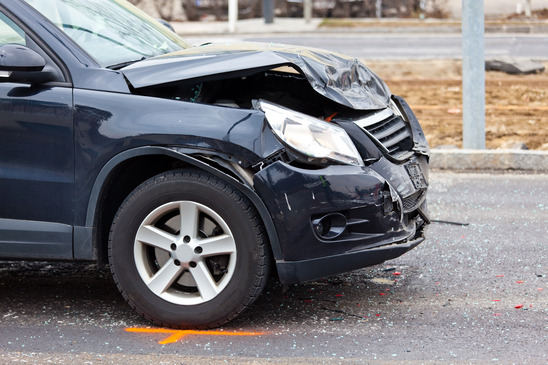Possible Safety Issues Regarding Protective Features Such as Airbags and Seatbelts You Should Be Aware Of
When a head-on collision occurs, the front seat occupants are rapidly propelled forward towards the windshield. In order to prevent someone from going through the windshield, most cars have two important safety features, the seatbelt, which must be buckled to be effective, and airbags, which react automatically to a crash and open by themselves. Seatbelts and airbags have made driving safer and do their part in protecting people well in most cases.

However, you should note that these safety features can also cause injuries of their own. When an airbag deploys, it opens very quickly with a lot of impact. It is designed to do that to protect drivers and passengers as fast as possible to quickly “pillow” the occupants of the car from as much of the crash impact as they can. However, being struck by an airbag can feel like a major impact of its own, especially to a person who has never had an airbag open on them. Getting struck by an airbag in action mode may result in ancillary injuries, especially ears and eyes before the impact lessens and it goes into “pillow” mode. If small or petite individuals are struck by a deploying airbag, more serious injuries can occur. That’s why people are advised to have children ride in the back seat. Another problem with airbags is sometimes they are defective or installed incorrectly and fail to go off altogether and the driver and passenger in the front seats may hit the window, which can cause extremely serious “life or death” types of injuries.
As for another major safety feature, seat belts hold you extremely tight in a high-impact crash. They are supposed to do that in a crash of this nature and, again, may cause damage while protecting, such as hematomas, fractures, bruises and punctured lungs.
If you are injured by an airbag or seatbelt, you also may be entitled to compensation from the automobile manufacturer if their engineering of the component was faulty, if their choice of material for the component was faulty and many other reasons. Call an automobile accident attorney like Jonah Wolfson of Wolfson & Leon, and he will discuss the possibilities with you.
Why Do Head-On-Collisions Occur? Where Do they Typically Occur? What Other Factors Could Be Involved?
The Most Common Reasons Include:
– Speeding
– Wrong-way crashes, which is when a motorist is driving on the opposite side of the road from where he should be
– Taking a curve too fast and causing the car to veer in the opposite lane
– Making a wide turn around a blind bend
– Crossing the median and hitting a vehicle in the opposite lane
– Turning into oncoming traffic
– Distracted driving (texting, talking on a cell phone, taking eyes off the road to deal with kids and pets, changing a radio station or CD)
– Falling asleep while driving and drifting across into oncoming traffic
– Low visibility due to poor weather conditions
– Incorrect passing of another car on a road with only 2 lanes
– Tire blowouts
– Road construction with alternate traffic routes
– Debris, animals or other obstacles on the road
– Traveling at a high speed in dangerous road conditions such as heavy rain
– Turning around a corner at a high rate of speed
– Not seeing or not reading and following road signs properly
– Bad judgment when passing another vehicle
– Driving while drunk or on drugs
– Low visibility because of adverse weather conditions
The Most Common Places They Occur Are:
– Two lane, undivided, rural roads
– Construction zones
– Highway ramps
– Between intersections
Additional Factors Include:
Contrary to common belief, the majority of head-on collisions occur under optimum road conditions, when the weather is dry and in daylight. One theory is that more fatal accidents of every type seem to occur in nice weather when drivers may relax their guard. In bad weather, the majority of drivers tend to be more cautious, more attentive.
Overview of Injuries that Can Occur as a Result of a Head-on-Collision
Some injuries that are known to occur in head-on crashes are: wrist and elbow injury, nerve damage, lacerations, whiplash, head and neck injuries, back injuries, scarring, burns, broken bones, ankle and foot fractures, leg fractures, and pelvic fractures. At the very worse, serious, life changing injuries can occur, such as traumatic brain injuries, injuries to the spinal cord which may cause paralysis, disfigurement, loss of one or more limbs, and death.
*****
Please click on this link to jump to Part 3 of this series on Head-on-Collisions
 Miami Personal Injury Attorney Blog
Miami Personal Injury Attorney Blog

